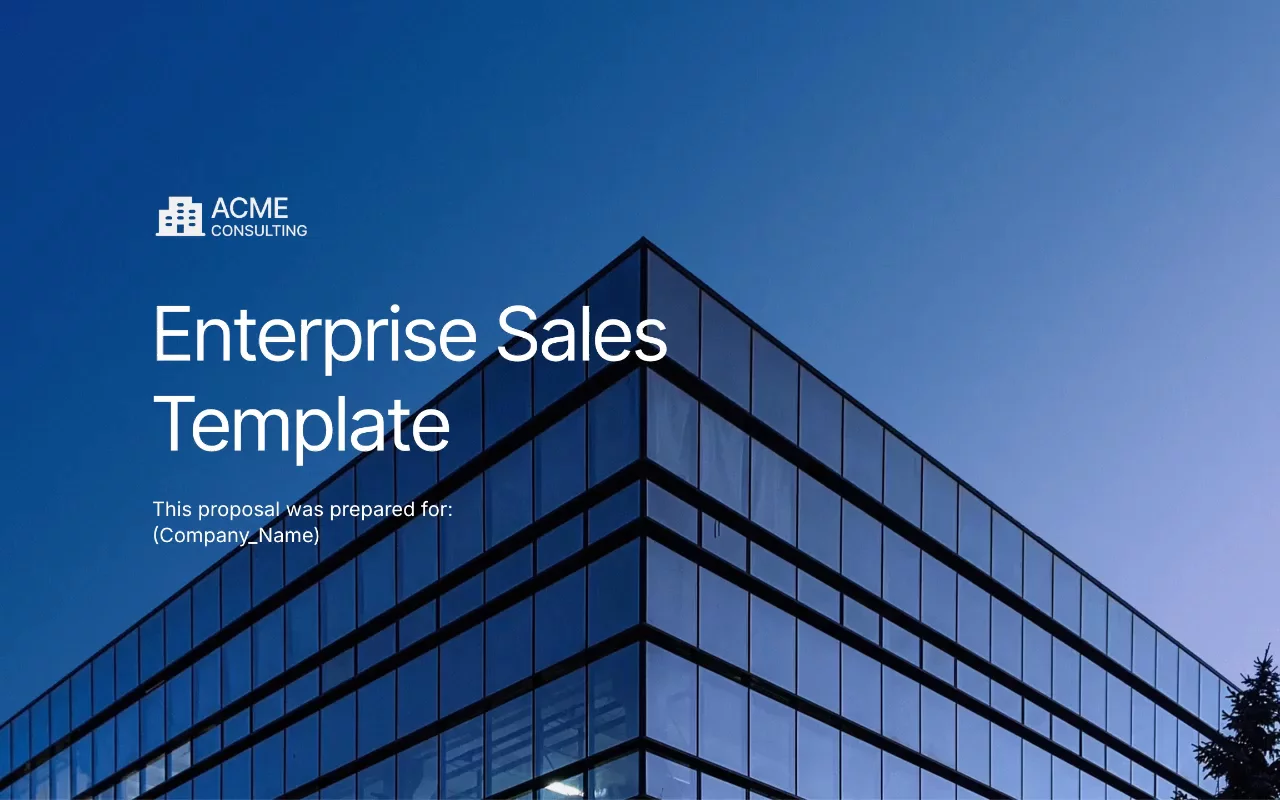- Proposal
Business proposal templates
Get to 'yes' faster by captivating your buyer at the proposal stage. Level up your buyer experience with Qwilr's proposal templates.

Enterprise Sales Template

Sales Proposal Template

Fundraising Proposal Template

Mutual Action Plan Template

Website Maintenance Proposal Template

Content Marketing Proposal Template

MEDDIC Sales Template

Gap Selling Template

Business Partnership Proposal Template

Product Proposal Template

Sales Proof of Concept Template

Solar Installation Proposal Template

Website Proposal Template

SaaS Proposal Template

Digital Marketing Proposal Template

Google Ads Proposal Template

Logo Design Proposal Template

Social Media Marketing Proposal Template
Frequently asked questions
A great business proposal possesses the following characteristics:
1. Targeted and personalized: Tailor your proposal to address the specific needs, pain points, and preferences of your target audience. Personalize the content by including the client's name, company details, and any relevant industry insights.
2. Clear and concise: Use clear language, avoid jargon, and provide straightforward explanations. Keep your proposal focused on the key points, and avoid adding unnecessary information that may distract or confuse the reader.
3. Well-structured and organized: Organize your content using headings, subheadings, bullet points, and numbered lists to improve readability and facilitate easy navigation through the proposal.
4. Attractive design and layout: Present your proposal in a visually appealing manner by using consistent formatting, professional fonts, and appropriate images or graphics. A polished appearance helps create a positive impression on your prospective client.
5. Compelling value proposition: Clearly articulate the benefits of your product or service, highlighting how it addresses the client's pain points and provides value over competitors' offerings.
6. Credibility and trust: Showcase your expertise, experience, and success stories to demonstrate your ability to deliver results. Include client testimonials, case studies, or relevant certifications to build credibility and trust.
7. Actionable next steps: End your proposal with a clear call-to-action (CTA) that directs the client to take the desired action, such as scheduling a meeting, signing a contract, or making a purchase.
8. Follow-up strategy: Plan a follow-up strategy to keep the conversation going and address any questions or concerns your potential client may have. Timely communication demonstrates your commitment and increases the likelihood of closing the deal.
By incorporating these elements into your business proposal, you can create a persuasive document that effectively communicates the value of your offering and increases the chances of winning the client's business.
The standard format for a proposal typically includes the following sections:
1. Hero Section: A hero section should include the proposal title, your name or company name, and the submission date.
2. Table of Contents: An organized list of headings and subheadings to help the reader navigate through the proposal.
3. Executive Summary: A brief overview of the proposal, highlighting its purpose, objectives, and the benefits of your solution.
4. Problem Statement or Background: A clear description of the issue you're addressing or the need you're fulfilling.
5. Proposed Solution or Approach: A comprehensive explanation of your proposed solution, including its methodology, timeline, and expected outcomes.
6. Qualifications or Expertise: A section showcasing your relevant experience, skills, and credentials that demonstrate your ability to deliver the proposed solution.
7. Budget or Pricing Options: A detailed breakdown of the costs involved, along with any pricing alternatives or payment terms.
8. Conclusion or Summary: A closing statement that reinforces the value of your proposal and encourages the reader to take action.
The 4 C's for proposal writing are:
* Clarity: Ensure your proposal is easy to understand by using concise language, avoiding jargon, and providing clear explanations.
* Coherence: Maintain a logical flow throughout your proposal by organizing your content with appropriate headings and subheadings, and connecting ideas smoothly.
* Consistency: Keep your tone, style, and formatting uniform across the entire proposal to create a cohesive and professional appearance.
* Convincing: Persuade your reader by highlighting the benefits of your solution, providing evidence of your expertise, and addressing any potential concerns or objections.
The five key elements of a business proposal are:
1. Executive Summary: A concise overview of your proposal that emphasizes its purpose, goals, and the value of your solution.
2. Problem Statement or Background: A clear description of the issue or need you're addressing, providing context and demonstrating your understanding of the situation.
3. Proposed Solution or Approach: A detailed explanation of your proposed solution, including its methodology, expected outcomes, and any unique features that set it apart from alternatives.
4. Qualifications or Expertise: A showcase of your relevant experience, skills, and credentials that instill confidence in your ability to execute the proposed solution successfully.
5. Budget or Pricing Options: A transparent breakdown of the costs involved in your proposal, along with any flexible pricing alternatives or payment terms that accommodate the needs of your target audience.